Welcome to Ceramic Review
Ceramic Review is the magazine for contemporary and historical ceramics, ceramic art and pottery.
Ceramic Review Issue 334
July/August 2025
Ceramic Review is the magazine for contemporary and historical ceramics, ceramic art and pottery.
July/August 2025
Stuart Carey, co-director of open access studios The Kiln Rooms, discusses the relevance and impact of professional development for makers today. This article is from CR 295 (Jan/Feb 2019).
Professional development is a real buzz phrase these days – I use it myself on a daily basis. But what does it really mean, and is it of any use? It seems to be used as an umbrella term for anything that can expand your knowledge, practice, or ability to sell: anything from reading a book or visiting a show, to a lecture, course or internship. I have personal experience of the relevance of this expansion and it is in personal experience that I most heavily weight the value of professional development.
Gaining insight into the experience of others and opening up about your own, starts the flow of symbiotic development. By listening to what someone else has been through, we can cut out years of wasted time – why does it always have to be: ‘Try it for yourself ’? How about: ‘I tried this and it didn’t work’? The idea that every generation of craftspeople have to make the same mistakes is a stuffy old construct that holds us back. Yes, we will make mistakes, and no, we won’t always listen, but being part of this conversation can move you forward exponentially.
Being a co-director at The Kiln Rooms studios gives me broad insight to the successes and mishaps of around 300 of its users per week. It’s a unique position to be in, as our classes and members range from the first contact with clay to ceramics MA graduates – there aren’t many other institutions with such variety. Another factor is that for the majority of our members, working with clay is a secondary passion, meaning they have a vastly varied skill set outside of the studios.
Our ‘mission’, if you like, is to see the appreciation and understanding of ceramics develop in a modern market: altering the average perception of the craft, developing the public’s appreciation for pottery and in turn its value. With such a vast number of users and visitors to the studios, again we find ourselves in a unique position – one of responsibility at an interesting juncture for ceramics.
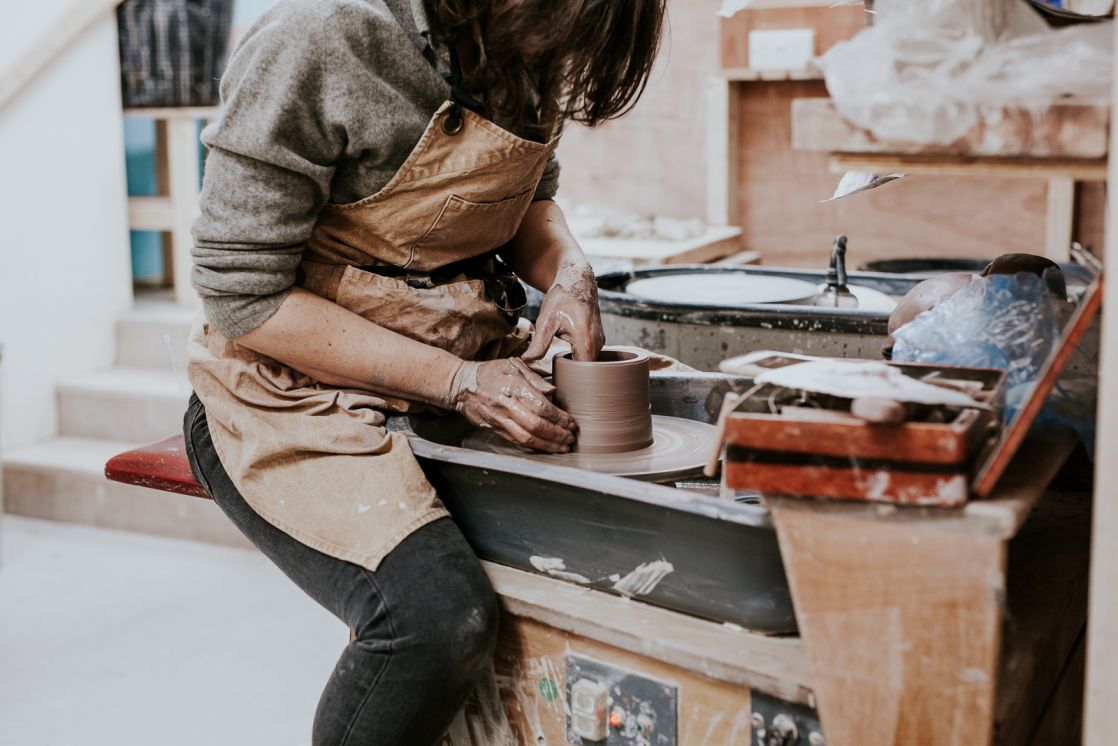
The Kiln Rooms © Jessica Williams Photography
So what can we do? There’s the obvious: sales, open studios, Instagram, etc. – all great proven ideas that engage our members with the public, increasing the opportunity to sell and support their practice, but this is just the surface. The depth of value lies in engaging users with each other and with more experienced makers, set within a framework designed around, you guessed it, professional development. In the right circumstances the stars really do align and when people are engaged the progress is palpable – and also visible in the quality of their work from show to show as the group pushes forward.
Every two or three weeks we invite a guest speaker into the studio to give a talk. They provide an insight into their practice, inspiration, and so on. I then ask them to get to the guts of it: ‘How do you survive as a potter?’ It’s the question on every early career maker’s lips, but it rarely gets asked.
Every two or three weeks we invite a guest speaker into the studio to give a talk. They provide an insight into their practice, inspiration, and so on. I then ask them to get to the guts of it: ‘How do you survive as a potter?’ It’s the question on every early career maker’s lips, but it rarely gets asked. We live in a social media-driven society where we can all see what you had for breakfast, what you look like in your swimsuit, and what car you drive, but asking how much you earn, no matter how pertinent of a question, is the last taboo. So we don’t ask them outright… yet this question can make or break people’s dreams, and there’s no right or wrong answer.
How much is enough? It depends who’s listening. It’s a subject rarely touched on in mainstream education, yet it is the main subject of conversation after graduation. In the appropriate arena, the logistics of cash should be more openly discussed. Phrase it carefully, but do ask financial questions.
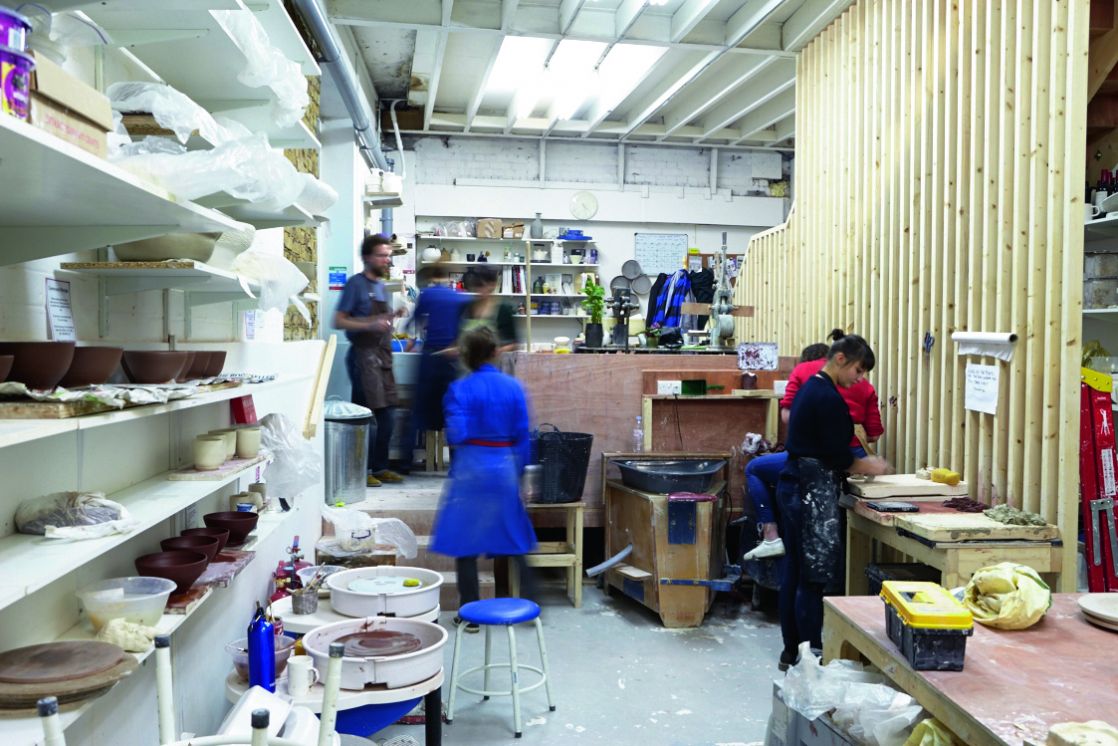
The Kiln Rooms in Peckham, London
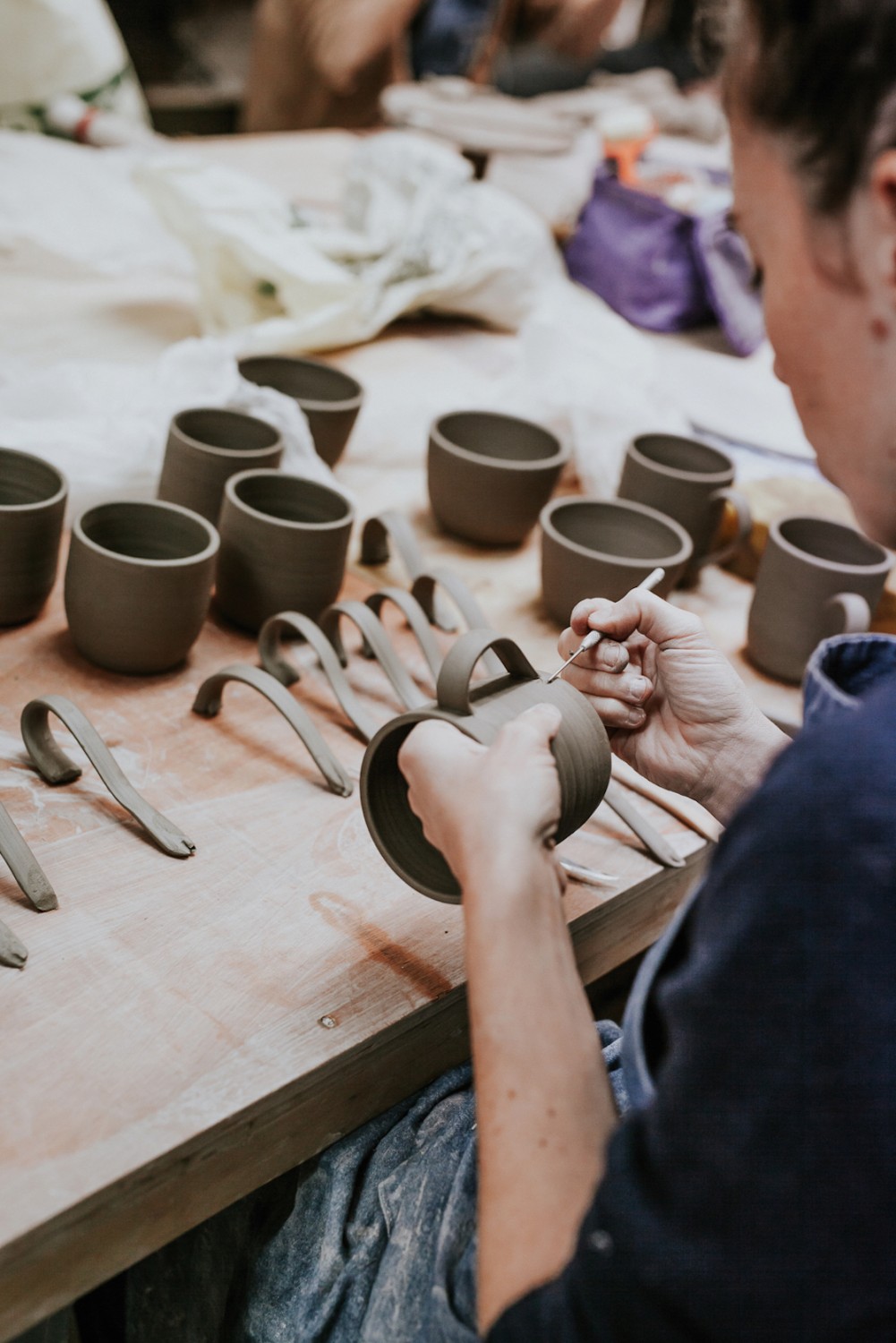
The Kiln Rooms © Jessica Williams Photography
Learning from the failure or misadventures of others is the number one way to cut down on the years it takes to become ‘established’, and in turn, finding out about their most successful exploits will give you an idea of what works, where to start or what to try next. A close second is drawing on your own success outside of clay and utilising it to your advantage, then on the skills of those around you. Although a dream for many potters, I believe working in isolation is a hurdle for progress. Becoming part of a community is great but being an active participant is truly valuable. Participating in the discussion teaches you more about yourself, as you offer your experience to others, than you’ll ever figure out alone.
We live today in a society of instant gratification and yet we find ourselves working with a medium that demands time and dedication. This point often divides our community. In one camp we have the technophobes, dedicated to the material and its traditional values. In the other we have those embracing modern technologies, focusing on branding and image. It’s easy to champion the values of your camp, but it’s lazy to fall into just one. To be the best at your craft yet also relevant and visible is the ideal. I believe most of us could use a little humility in admitting that we still have something to learn.
It’s crucial that your framework is right. Saying yes to every opportunity in exchange for experience is good investment of time, but if the framework is off it can be a waste. For example, at our shows we implement a pricing strategy to ensure members understand the value and ceiling price of their work. This has the benefit of preventing makers underselling each other and the wider market. It also educates the buyer – when they can’t find a mug for a fiver, they have to dig a little deeper, in both pocket and thought.
It’s crucial that your framework is right. Saying yes to every opportunity in exchange for experience is good investment of time, but if the framework is off it can be a waste. For example, at our shows we implement a pricing strategy to ensure members understand the value and ceiling price of their work. This has the benefit of preventing makers underselling each other and the wider market. It also educates the buyer – when they can’t find a mug for a fiver, they have to dig a little deeper, in both pocket and thought.
This idea of the right framework also goes for exploitative offers of work in exchange for ‘exposure’, a rarely rewarding scenario and my personal pet hate. Or selling you show space because they ‘really love your work’. The right framework can also be a personal decision, like picking relevant shows or the right audience. Always contact makers who have done it before, listen to their experiences and make informed choices rather than being flattered into spending your hard-earned money.
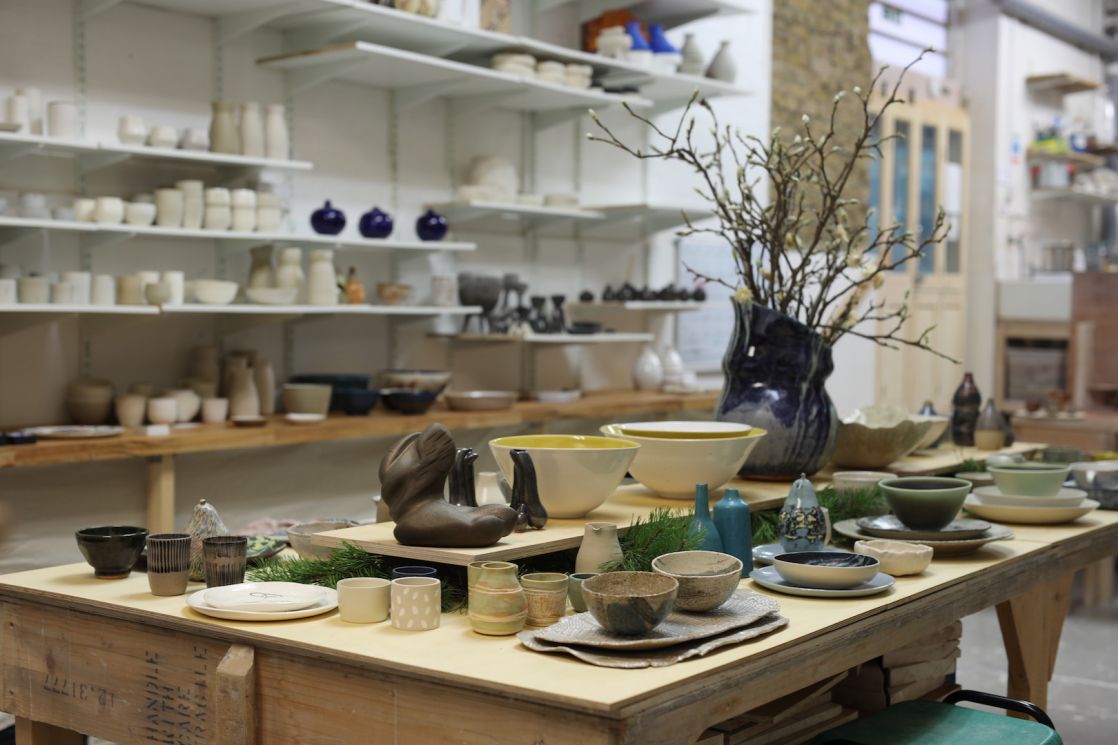
Sale of work by The Kiln Rooms' members
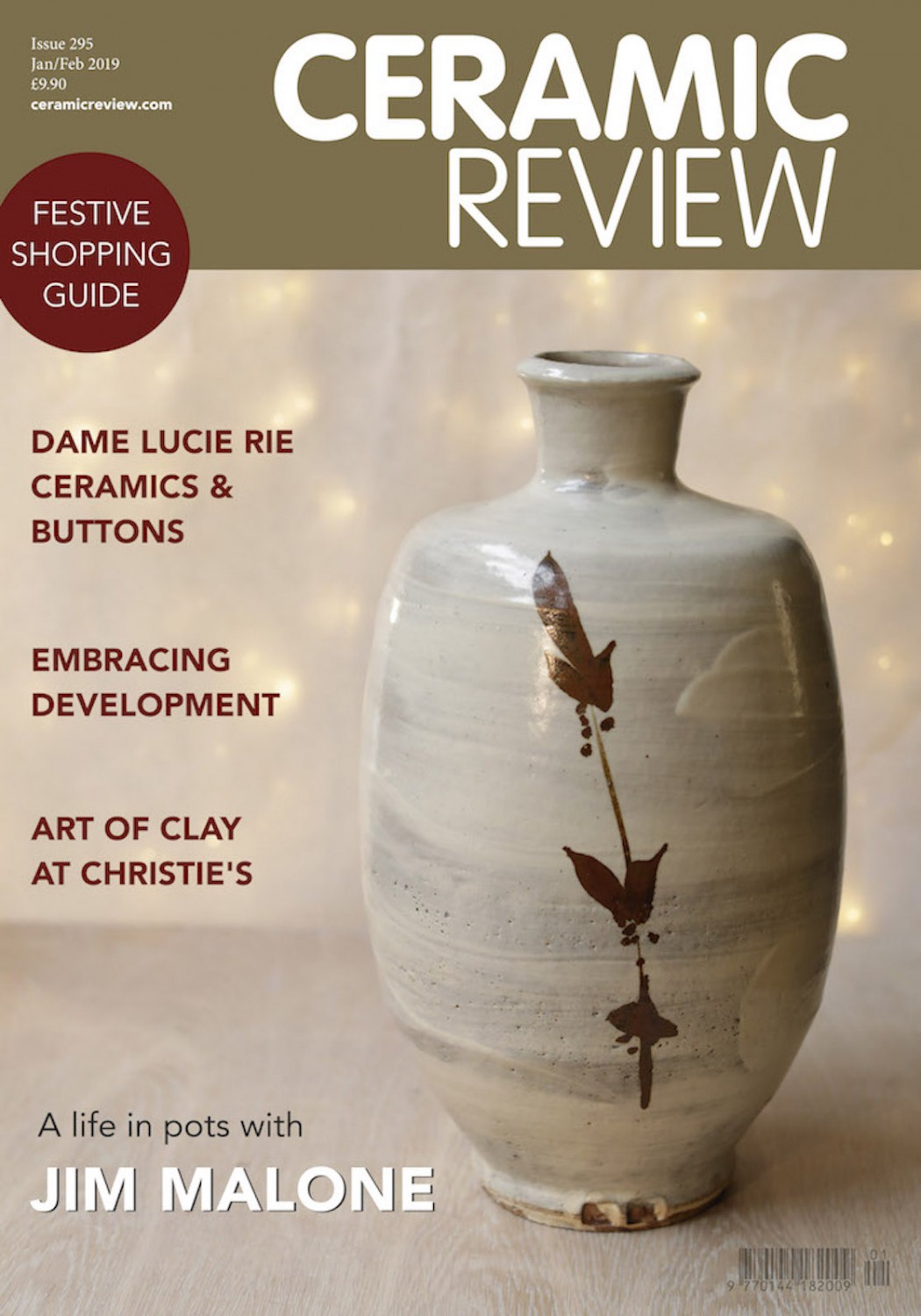
So, to summarise: we asked ‘What is professional development?’ I believe it is taking that which you have, seeking that which you have not, and combining the two to push you one step further forward than you would have been without it. It is a constant process. Having watched thousands of people try, I can say without doubt that those who succeed are those who take advantage of their situation: who utilise the knowledge relevant to them of the people around them. You need to be clever, active and open, to listen and converse. Be conscious both of your material and the world we live in. Don’t be afraid to fail, but be sure to share your experiences. Finally, always be working but never waste your time – and when you find out how to do that, let me know.
This article is taken from Ceramic Review issue 295 (Jan/Feb 2019). For more, click below to subscribe.